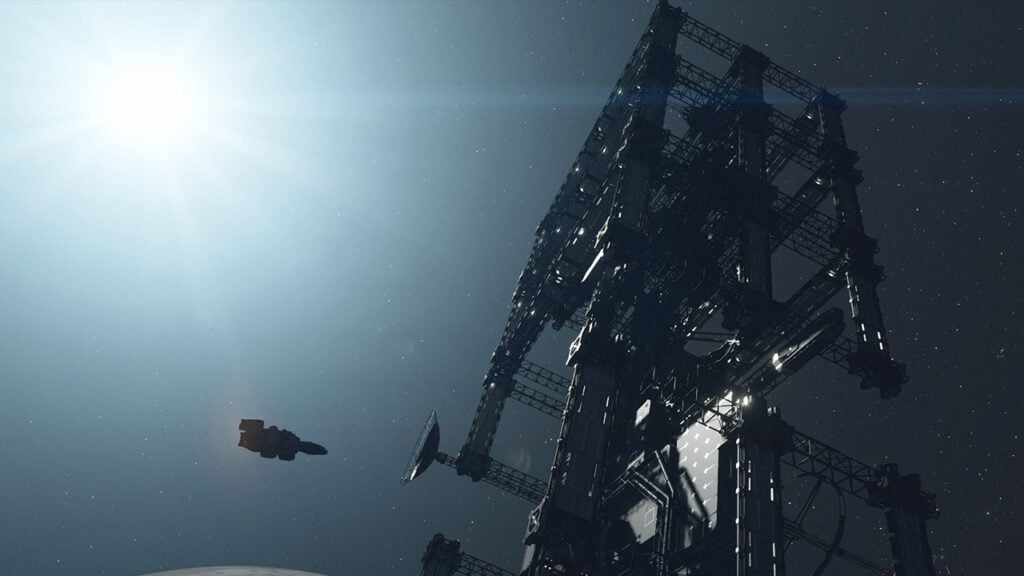Skip To...
Starfield is a game that takes place across several star systems and planets. Many planets include aliens or other wildlife not typically found in our solar system. Piloting a spaceship and flying around is another major part of the game, and seeing the possibilities is exciting. Unfortunately, Starfield gets astronomy wrong at certain points in the game. While you must often suspend your disbelief in video games, it’s hard to tell what is and isn’t true. Just because it isn’t possible now doesn’t mean it will always be impossible. But when it comes to science vs. science fiction, Starfield gets the following things wrong.
Gravity Jumps Moving Faster Than Light Isn’t Possible

Ships in Starfield use Gravity Jumps to move faster than light, reaching star systems in hours. It doesn’t matter whether you are a small A-class ship or a huge C-class cruiser. Every ship can travel to faraway star systems easily. While this doesn’t protect you from Spacers or the Crimson Fleet, it does mean you won’t die of old age before you reach a planet. Unfortunately, this is not possible in actual science.
Nothing travels faster than the speed of light, which is 186,000 miles per second. The distance between Earth and its Moon is 240,000 miles, which means it would take the speed of light 1.3 seconds to cover that distance. The distance from Earth to Pluto is 3.1 billion miles, so it would take approximately 4.6 hours to travel that distance. But traveling within Starfield’s Sol system won’t take even a fraction of that time.
It would also be unlikely that you can reach different star systems as quickly since they are significantly further away. In real life, Alpha Centauri is four light years away from Earth. That means light would take four years to reach Alpha Centauri. We would be four years older if we could move a spaceship at that speed. Going faster than light would also be impossible, thanks to the theory of special relativity. But that doesn’t happen in-game when traveling from Sol to Alpha Centauri. Too much realism would spoil the appeal and would likely kill a character after traveling to a few planets.
Spaceship Weapons Don’t Work Like That

While battling ships in space, you have several weapons available to you. Lasers, ballistic projectiles, missiles, particle cannons, and EM weapons are available. You must aim them at a ship and fire, which is easier with Targeting Control Systems. It’s important to lock on before you fire because your weapons will fire straight ahead and miss if that happens. This is another area where Starfield gets astronomy wrong and errs on the side of being cool.
Space-to-space weaponry would run into several problems. First, lasers of any kind wouldn’t fire like a bullet and would fire in a straight line. Second, space is a vacuum, meaning your weapons would travel infinite distances. These would still be subject to whatever gravity is there, but they would continuously travel instead of disappearing when they miss. That means another spaceship could be hit at some point.
Space weapons have been developed but nowhere near what it looks like in Starfield. It will also be more complex than what we see in-game because space combat is simplified for us. Actual ships fighting in the vacuum of space would have to develop effective weapons for that environment. While it’s fun to fight with the weapons you have in Starfield, actual spaceship combat will not look remotely similar to it.
Time Dilation Isn’t Factored on Other Planets

Conveniently, time passes in Starfield like in real life, no matter where you are. Even if you are on a planet that has barely any life, minutes are still in 60 second increments, which applies to everything on the planet. But this doesn’t factor in time dilation: time moves faster when you are in motion than when you stand still. This often happens when gravity is involved since you would perceive some events more slowly than on other planets.
But this isn’t true in Starfield, as time is constant wherever you go. Even on uninhabited planets without outposts, gravity is the same as on other star systems. People don’t age quickly when you travel from planet to planet, and colonies are rarely wiped out due to old age. Instead, colony shipments and deliveries are done within days, not accounting for different gravity on planets.
You can excuse this because it would be too complex if applied to real life. But if we did achieve interstellar travel, time dilation would be a real thing travelers would deal with. The lack of it in Starfield is one area where science wins the battle over sci-fi.
Related:
How To Fix Grav Jump Pending in Starfield
It would be unreasonable to expect Starfield to be an accurate recreation of everything we know about space. Part of the appeal of science fiction is imagining technologies that would make all of this possible. But in real life, the battle of science vs. sci-fi ends in science’s favor. When exploring space, we would have to deal with these issues, and they can’t be brushed aside. While Starfield gets astronomy wrong in these areas, that doesn’t mean it’s less enjoyable.
There are other areas where Starfield’s science isn’t perfectly sound, but some (like aliens) can’t be proven wrong just yet. But the above three points would be necessary for space travelers flying around, and you can’t get around them. Thankfully, we are okay with Starfield taking liberties with astronomy in the name of fun. Too much realism would drag the game down, and exploring everything it offers is a big part of the appeal.







